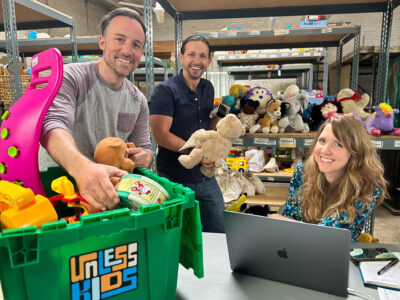You never just start a company, like you turn on a lamp or begin a race. You conjure a company.
You make up a story, with a plot and characters and an ending. Instead of prose, you draft it in spreadsheets and emails. Then you convince a cofounder and your first customer that it’s not just fiction.
In February, I shared with family and friends that I was starting my second company, called Bikeout, with my cofounder Amanda Crawford-Staub after hosting several adventure rides over the past four years. We had spent the second half of 2019 shaping an idea into a plan.
My first company, this very publication, was mostly a response to a crisis. It was 2009 and a global recession had hit and starting a business with two friends was the best solution we had for survival. Regardless of if we had been successful or not, entrepreneurship provided a nimble way to start a career.
We found ourselves taking on more responsibility than we would have otherwise been allowed as young workers. We made mistakes that had real consequences for our team and were forced to learn fast. And we had the privilege of seeing a team come together to create impact in the communities that we serve.
Four weeks ago, Bikeout’s story came to a stunning halt, like operations have for so many small business owners. We launched our first product the same week that the coronavirus began to take over the American dialogue. That urgency couldn’t have come soon enough. But Amanda and I had bet on a path that was focused on large-scale events that brought together people to celebrate the outdoors and a shared sense of wellness. For the foreseeable future, our business is not possible to operate in most of the U.S.
The steps that come next for us aren’t so different from the day-to-day operations of any business. You evaluate your resources and your responsibility. You look to your community to understand how you can best serve them. You go back to your draft and keep writing. We’re working to understand what we can do next in light of so much rapid change.
What started as the closing of a chapter — for us, the business planning process that allowed us to launch our new product — more recently became a place to channel our energy. If we couldn’t work on delivering our product immediately, maybe the work we did to create our product could help someone else.
We had developed and followed a checklist to get us to launch. Over the past few weeks, we cleaned up that checklist to make it available to others who may be considering building a business or refining one they’ve already been working on. What we hope sets it apart is a step-by-step process that brings clarity to what you need to begin.
You can see the checklist as a Trello board (a web-based task management tool) with detailed instructions here:
Check it outWe built out a task list that provides some linear structure, examples of our own work and some thoughts on how we approached each item. If anyone is interested in helping to improve the checklist, or has questions about it, please be in touch — brian@bikeout.co.
I can’t yet compare the challenges of starting a company today with a decade ago; it certainly feels more scary now. How we’ll come together as a society to address the health and economic crisis ahead is likely to change how we think about and operate businesses.
But I look back on the early days of Technical.ly to remind myself that seismic change can bring new paths. I’m not alone — data shows that 50% of Fortune 500s started during a recession. When you’ve got nothing to lose, it’s easier to make a leap. And for some people, an act of entrepreneurship right now might be the most reasonable path forward. It certainly was for me.
Before you go...
Please consider supporting Technical.ly to keep our independent journalism strong. Unlike most business-focused media outlets, we don’t have a paywall. Instead, we count on your personal and organizational support.
Join our growing Slack community
Join 5,000 tech professionals and entrepreneurs in our community Slack today!




